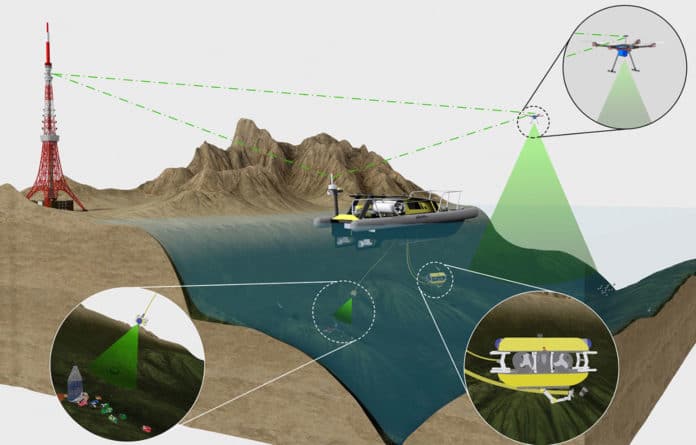The vast patches of plastic and other garbage are floating on the world’s oceans, which cover more than 70% of the surface of our planet. Around 90% of this garbage ends up on the seabed that the human eye cannot see and can have devastating consequences on marine life, nature, and, ultimately, for us, humans.
The European Union-funded project called SeaClear is being developed to clean up the seabed first, especially in coastal areas where pollution is particularly heavy, using various robotic vehicles that are connected to each other. The SeaClear consists of an autonomous or remote-controlled mothership (unmanned surface vehicle, USV), two underwater robots (remotely operated vehicle, ROV), and an aerial vehicle or drone (unmanned aerial vehicle, UAV).
The system will be deployed mainly in coastal areas, as that’s where most of the garbage from rivers enter the ocean. Two ROVs will be supplied with electricity from the mother ship via umbilical cables, and on the mothership will also use an integrated computer to process the transmitted data.
Initially, the drone and an ROV will be deployed to chart the litter on the surface and in the water column. The second ROV makes use of this information and uses a custom-designed gripper and a suction device to collect the mapped garbage on the seabed. This waste will be returned to the surface vessel and disposed of in the central bin.

Deep-learning algorithms will be used to help the drone and the first ROV differentiate between trash and marine animals. A combination of different sensory systems such as conventional and multi-spectral cameras or acoustic sensors to obtain relevant data about the waters and, after several training sessions, to online detect and classify marine waste.
The SeaClear system has already undergone its first tests this spring in the Port of Hamburg and along the coast of Dubrovnik, Croatia, where it cleaned up debris at depths of 20 to 30 meters. The locations were chosen because they were quite different from each other. The port is home to industrial, busy, and alluvial water, while the Croatian coast is calmer, clear-watered, and tourist-oriented.
The project partners include the German Fraunhofer Center for Maritime Logistics and Services, the technical universities of Munich, Delft, Dubrovnik, and Cluj-Napoca, SubSea Tech Marseille, the Hamburg Port Authority, and the DUNEA Regional Development Agency in Dubrovnik. The timing of the implementation of SeaClear has not yet been announced.
Previously, in 2019, The Ocean Cleanup, a Dutch non-profit organization, successfully designed a giant system to collect plastic waste on the ocean surface.
